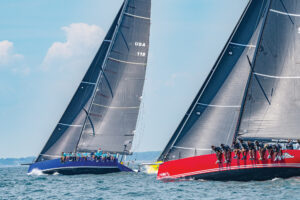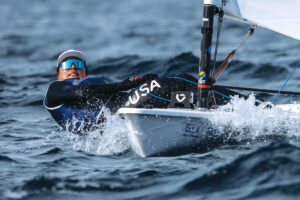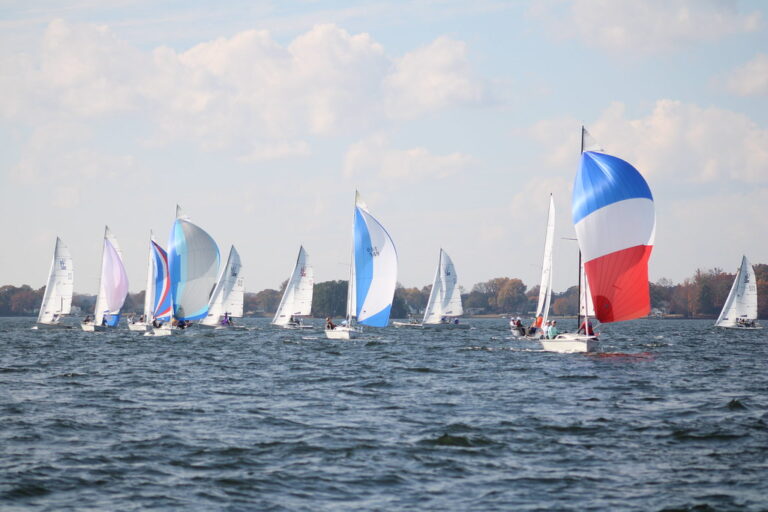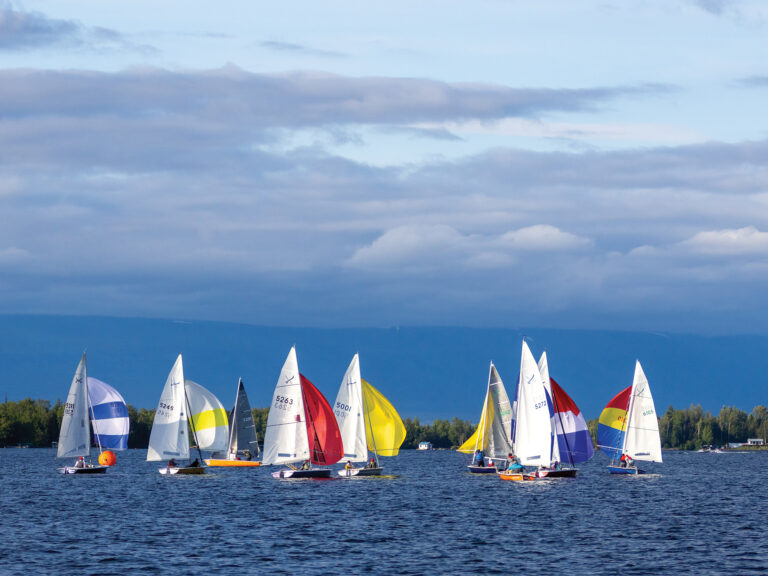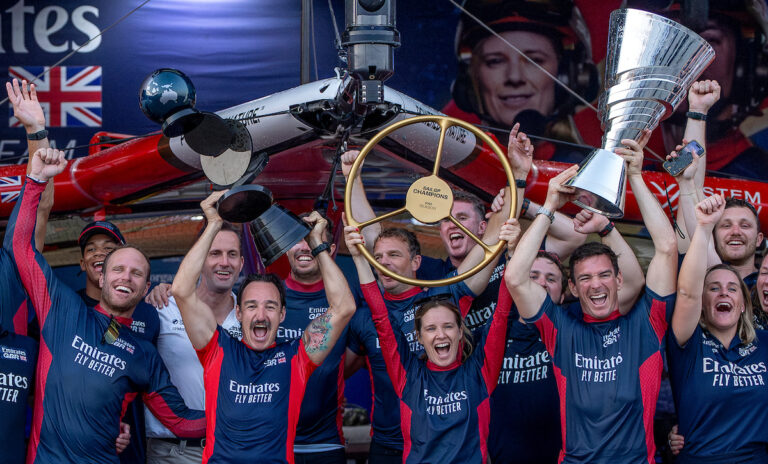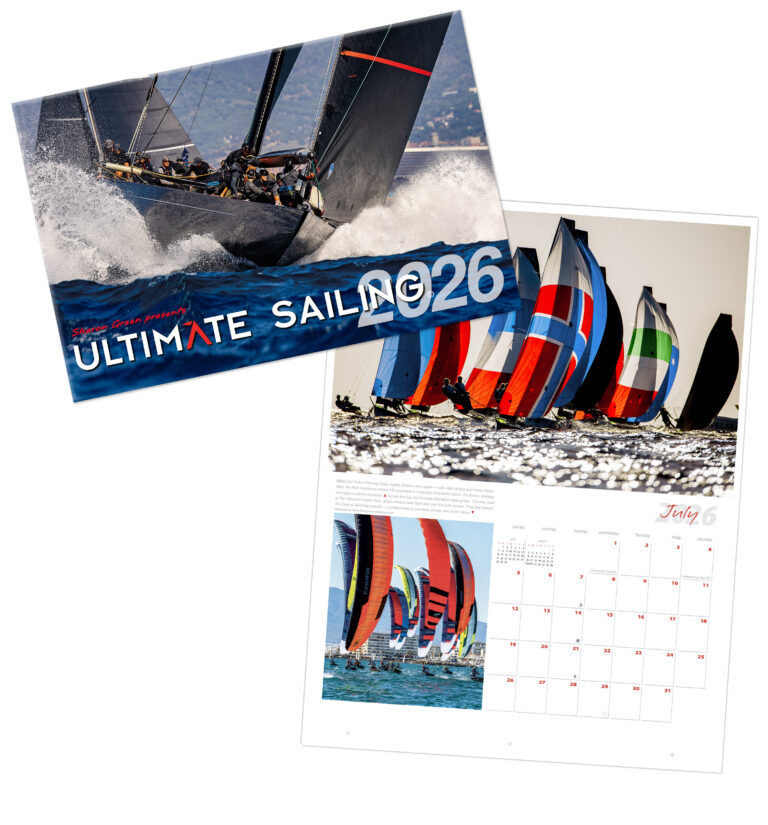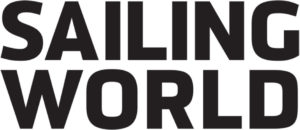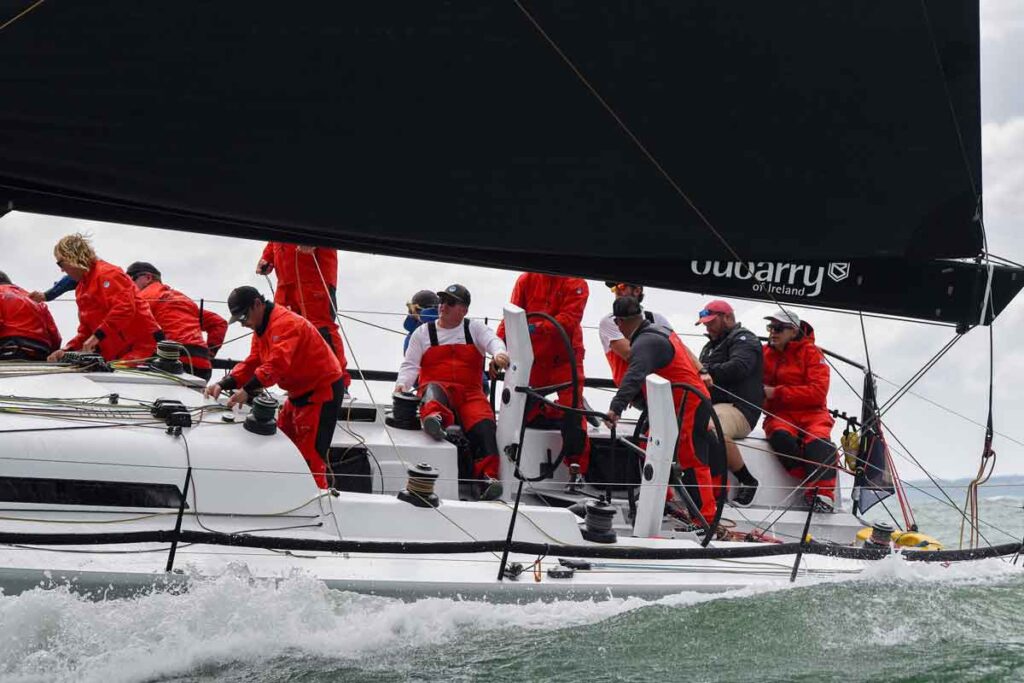
For those who have forgotten the Admiral’s Cup, a quick history lesson: The Royal Ocean Racing Club created the regatta back in 1957 and it was the stuff of legends until the event was canned in 2005 after participation waned. In its heyday it was a legendary big-boat showdown with three-boat national teams battling through grueling inshore races before tackling the epic Fastnet Race. As a young reader of Sailing World in the 1980s, I remember well the stories and images of this faraway circus of custom raceboats and sponsored teams. There was nothing like it.
When American sailor Ron O’Hanley, who has checked off virtually every major offshore race with his 20-year-old canting-keel Cookson 50, first heard about the Admiral’s Cup revival, his decision to participate seemed straightforward.
“At the time, it seemed like a no-brainer, which was, in retrospect, quite naive,” O’Hanley says. “In the end, it was appropriately a heavy lift.”
His motivation stemmed partly from his experience chairing the strategy committee of the New York YC board. “I’ve always viewed the club in particular as having a special role in advancing the state of the art of sailing,” he says. “The idea of this thing coming back and coming back in the form that it was being proposed was quite attractive.”
If preparing for your local overnight race is a lot of work, consider the complexity of the Admiral’s Cup. Getting the boat to Europe may actually be the easiest part.
Stepping up to fly the burgee of the New York YC in this year’s new club versus club Admiral’s Cup format were members Stefan Jentzsch, with his sophisticated Botin 56 Black Pearl in the big-boat fleet, and Donald Thinschmidt’s Ker 43 Abracadabra with an international crew. O’Hanley initially planned to partner with another club member to fit the Admiral’s Cup’s two-boat scheme, but found this challenging because of what he perceives as a waning interest in distance racing in the United States. Finding a partner where everything aligned never happened. “It’s a time commitment and financial commitment, not just for the boat owner, but a lot of other people,” he says.
While his search for an American partner proved unsuccessful, an unexpected opportunity emerged when the Royal Irish YC approached him. As a relatively new member of the club, which he joined after enjoying his offshore sailing experiences in Ireland, O’Hanley instantly appreciated their commitment to the event. “They lined up a great small boat partner,” he says. That was Tom Kneen’s JPK 11.80 Sunrise, overall winner of the windy 2021 Rolex Fastnet Race. “To me, it was as much about supporting this thing and getting it off to a good start.”
The Royal Irish YC proved invaluable in assembling a competitive team. The Admiral’s Cup requires that each boat include two women and at least one member under the age of 27. “We used to have members under the age of 27 and now they all have children,” O’Hanley jokes, highlighting the challenge of meeting this requirement for established teams.
The Irish club also helped secure crew members and provided financial assistance to ensure their participation. Their moral encouragement proved significant, too. “I can’t understate the amount of moral support,” O’Hanley says. “Them on the dock, them shooting their videos…they sent me a picture of basically what was going on back in the clubhouse watching the starts.”
Imagine the same impact at any club in America, members rooting for sailing friends faraway, representing on the big stage. It was a missed opportunity for sure.
The beauty of the Admiral’s Cup is that it combines two distinct disciplines: fast-paced inshore buoy racing and complex, current-riddled distance courses. “The formats couldn’t be more different,” O’Hanley says. “You’ve got that inshore stuff…two laps around the course. And then you’ve got what they call ‘around the cans’ —we would call short navigator’s races around navigational marks—and then finally, obviously, the Fastnet.”
This variety places significant demands on both boats and crews. “It puts a lot on the boats and the crews to be able to do all that,” O’Hanley says. “It’s kind of the biathlon of sailing. I think that’s just a great format.”
Walking the docks at the event in Cowes, England, he was impressed by the evolution of custom designs, particularly the newer TP52s. “This latest evolution is just amazing,” he says. “The story used to be that they weren’t great offshore…they’re really highly refined, and they’ve become just much more versatile.”
He was equally impressed by the smaller competitors in the 40-foot range. “What really stood out there was just very powerful boats in a small package. They look like a heck of a lot of fun,” he says. “As I think about next time, I’m not sure whether I’d want to be the big boat guy or the little boat guy if I were to do it again.”
Privateer was notably the oldest boat in Cowes, but still plenty competitive in its conditions. “The only thing original on the boat is the hull,” O’Hanley says. “The prod has been extended three times. There’s a new rig, new keel, new rudder. We’ve done a lot to the boat.”
Despite its age, the boat—and the crew—delivered when it needed to. “Our two best races were one in heavy conditions and one in the lightest conditions,” O’Hanley says. He does, however, acknowledge that the boat isn’t ideal for the demands of the Admiral’s Cup. “It’s really not the horse for the course. If I were doing it again, I’d give real thought…”
He also heaps praise on the Royal Ocean Racing Club for its comprehensive media push, which he believes American yacht clubs could learn from. “The video and social media support from the RORC on this, and coverage was a real lesson to all of us,” he says. “The real-time excitement that got built there, I think was a good lesson for all of us, because it’s a little bit of an uphill climb here in the U.S. on distance sailing. Part of what we need to do is just show the excitement of it.”
Looking ahead, O’Hanley sees potential for increased American involvement in the Admiral’s Cup. “What makes the Admiral’s Cup, this format, this location, just so interesting and so challenging is also what makes it so rewarding,” he says. “I mean, there’s just an incredible sense of accomplishment. We certainly would have liked to have done better, and we think we know what we need to do to do better, but there’s just an extraordinary sense of accomplishment when you’re done.”
The next edition is on the calendar for July 2027. That’s plenty of notice, and the RORC reminds us Yanks that, “The Admiral’s Cup is more than a trophy, it’s the beating heart of international team racing.”
Get the defibrillator, STAT, because time is of the essence.
“If you’re a year out, you may be too late,” O’Hanley advises. “So, if you’re thinking about it, you ought to be thinking about it now. And I would encourage others to consider it and don’t be put off by the highly professional, purpose-built boats and all that. There are a lot of others in there, and so much of this is about the adequacy of your preparation, optimizing your boat and having the right partner, because it is a team event. It’s about the two of you, not just how the one of you do. Having the right boat makes sense, but it’s really about the preparation you put into it.”

